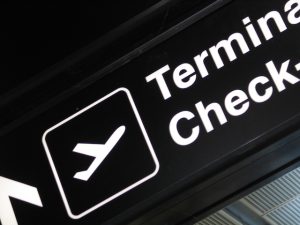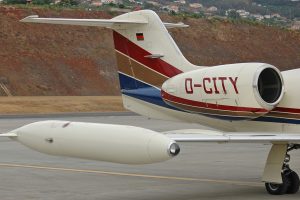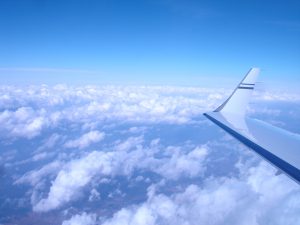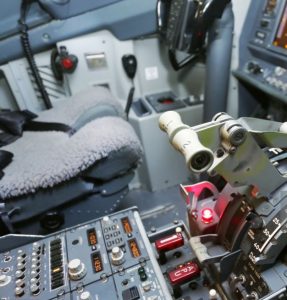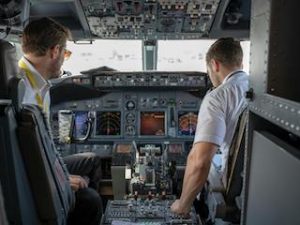Flight Radars And Their Connection to Airports
 Flight radars are an essential tool for modern aviation. They provide real-time tracking of aircraft as they travel across the sky. These radars help air traffic controllers monitor flights and ensure safety in the airspace. Airports rely on flight radars to track incoming and outgoing flights, providing vital information for both pilots and ground operations.
Flight radars are an essential tool for modern aviation. They provide real-time tracking of aircraft as they travel across the sky. These radars help air traffic controllers monitor flights and ensure safety in the airspace. Airports rely on flight radars to track incoming and outgoing flights, providing vital information for both pilots and ground operations.
The technology behind flight radars has evolved over the years. Today, radar systems offer more precise and reliable data than ever before. This helps improve efficiency and safety, both in the skies and at the airport. As aviation technology continues to advance, so does the functionality and effectiveness of flight radars.
How flight radars work
Flight radars work by emitting radio waves that bounce off objects, such as aircraft. The radar system then receives the reflected waves, which provide data about the location and movement of the aircraft. By measuring the time it takes for the radio waves to return, the radar can determine the distance to the aircraft.
The radar system also calculates the aircraft’s speed and direction based on how the radio waves are reflected. This allows air traffic controllers to track flights and provide instructions to pilots, ensuring that air traffic remains orderly. Modern flight radars are capable of tracking hundreds of flights simultaneously, providing a comprehensive view of air traffic in real-time.
Flight radar systems at airports
Airports use flight radar systems to manage air traffic efficiently. These systems allow air traffic controllers to monitor aircraft as they approach and depart from the airport. By tracking planes in real time, controllers can manage the flow of traffic both in the air and on the ground.
Airport radar systems are often linked to a network of other radar systems, allowing for seamless communication between air traffic control centers. This network ensures that pilots receive clear and up-to-date information about their flight paths, helping to avoid potential conflicts. Flight radar systems at airports are a key part of the safety and coordination processes that take place every day.
Different types of flight radars
There are several types of flight radars, each designed for specific purposes. Primary radar systems are used to detect and track aircraft, while secondary radar systems rely on aircraft transponders to transmit information back to the radar. Secondary radar provides more detailed information, such as altitude and identification, making it an essential tool for air traffic control.
Radar systems are also classified based on their range. Short-range radars are typically used for tracking aircraft near airports, while long-range radars are used to monitor aircraft at higher altitudes and greater distances. Both types of radar play vital roles in managing air traffic and ensuring safety.
Flight radars and air traffic control
Air traffic control relies heavily on flight radar systems to manage aircraft in real-time. Controllers use radar data to provide instructions to pilots, including altitude adjustments and changes in flight paths. The information from flight radars helps controllers prevent collisions, ensure safe distances between aircraft, and maintain efficient flight patterns.
By monitoring aircraft movements, flight radars help controllers manage traffic flow, ensuring that planes arrive and depart on schedule. This coordination is particularly crucial during busy periods when multiple flights are arriving and departing simultaneously. Flight radars enable air traffic controllers to handle complex situations efficiently and safely.
Flight radars and airport operations
Airports also use flight radars to manage operations on the ground. Radar data helps airport ground controllers track the location of aircraft as they taxi to and from the runway. This information is used to direct ground vehicles, such as fuel trucks and baggage handlers, to avoid any potential conflicts.
By providing real-time location data, flight radars help improve airport efficiency and reduce delays. Ground operations are coordinated to ensure that aircraft are serviced quickly and safely, allowing for a smooth transition between flights. This coordination is vital to maintaining on-time departures and arrivals, particularly at busy airports.
Flight radar data and flight tracking
Flight radar data is often used for flight tracking purposes. Many aviation websites and apps provide real-time flight tracking services, using radar data to display the position of flights on a map. Passengers can use these tools to track flights, whether they are waiting to board or waiting for an arrival at the airport.
Flight tracking is beneficial for a variety of reasons. It helps travelers stay informed about their flights, including any delays or changes in departure times. Additionally, flight tracking tools provide transparency, allowing passengers to see exactly where their flight is and how far it has traveled.
Impact of flight radars on airport safety
Flight radars significantly enhance airport safety. By providing air traffic controllers with accurate, real-time data, radars help prevent accidents and collisions. The information allows controllers to make informed decisions, reducing the likelihood of human error and improving overall safety at the airport.
Radars also play a crucial role in ensuring safe landings and takeoffs. By monitoring the positions of aircraft both in the air and on the ground, radar systems help prevent runway incursions and other safety risks. This level of monitoring is essential in busy airports where multiple aircraft are operating at once.
Flight radar technology and modern airports
As airport technology continues to evolve, so does the role of flight radars. Modern airports are adopting advanced radar systems that offer higher levels of precision and integration. These systems can track aircraft at greater distances and offer more detailed data, providing air traffic controllers with a comprehensive view of air traffic.
The integration of flight radar systems with other airport technologies, such as weather monitoring systems and automated baggage handling systems, is transforming airport operations. These advancements help improve the flow of passengers and flights, reduce delays, and increase overall efficiency at airports.
Flight radar apps and their benefits for travellers
In addition to airport systems, flight radar apps have become increasingly popular among travelers. These apps allow users to track flights in real time, providing detailed information about flight locations, expected arrival times, and any delays. Passengers can access this information directly from their smartphones, making it easier to stay informed.
Flight radar apps also provide additional features, such as push notifications about flight status updates and real-time alerts. These features help travelers stay on top of their plans and make adjustments if needed. Flight radar apps have become a valuable tool for travellers, offering them greater control and knowledge about their flights.
Flight radars and airport efficiency
Flight radars contribute to airport efficiency by providing real-time tracking and monitoring. This data helps coordinate various aspects of airport operations, from air traffic control to ground services. The seamless flow of information ensures that airports can manage large volumes of flights and passengers efficiently.
By improving communication between air traffic control, airport staff, and pilots, flight radars help prevent delays and optimize airport operations. With accurate tracking information, airports can adjust flight schedules and prioritize landing or takeoff sequences as needed. This level of coordination helps airports maintain high levels of efficiency, even during peak travel times.
Future of flight radars in airport operations
As technology continues to improve, flight radars are expected to become even more advanced. The future of flight radar systems lies in integrating artificial intelligence and machine learning algorithms to predict flight paths and detect potential issues before they arise. These advancements will further enhance the safety and efficiency of airport operations.
The development of next-generation radar systems will also focus on improving data accuracy and reducing latency. With more precise tracking information, air traffic controllers will be able to make more informed decisions, leading to even smoother operations at airports. These innovations promise to revolutionise the way airports manage air traffic and improve the passenger experience.
Maximising airport operations with advanced flight radar systems
The integration of advanced flight radar systems into airport operations has the potential to maximize efficiency and safety. By leveraging cutting-edge technology, airports can enhance their ability to manage air traffic, improve ground operations, and provide a better experience for travelers. As radar systems evolve, airports will continue to adopt these innovations to create smarter, safer, and more efficient operations. With flight radars at the core of airport management, the future of air travel looks brighter than ever.


